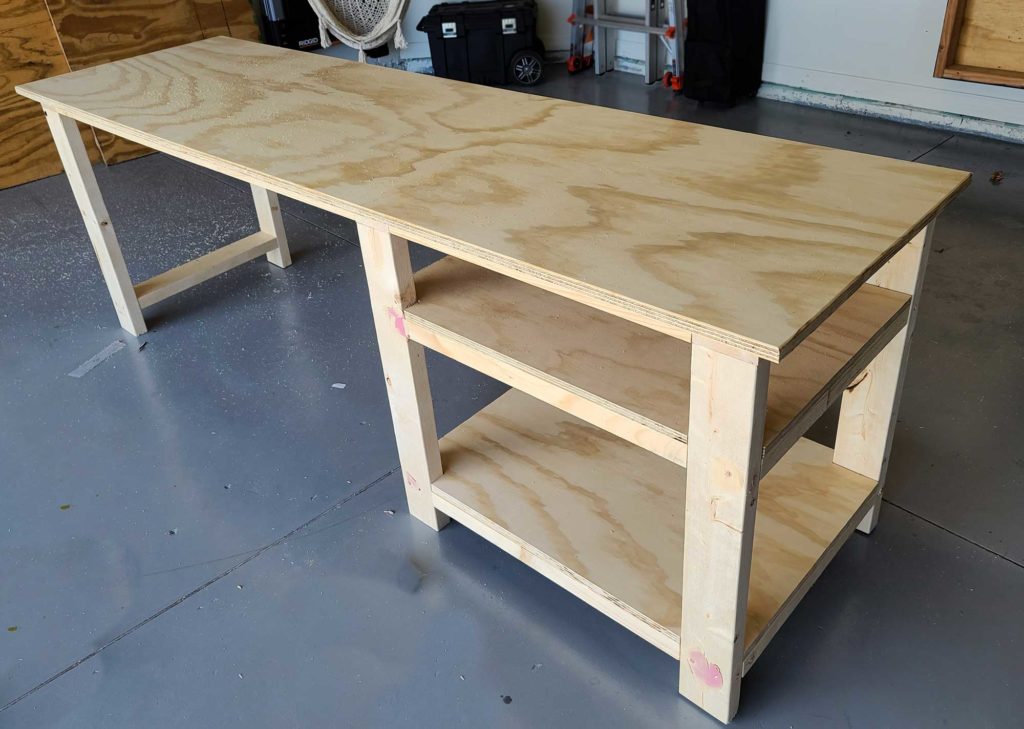
Hey there, fellow DIY enthusiast! So, you're thinking about building your own desk, huh? That's awesome! It's a great way to learn new skills, save some money, and create something truly unique to fit your space. But with so many ideas out there, it can be tough to know where to start. Don't worry, I've got you covered! I'm going to spill all the secrets to crafting a modern, stylish desk that's perfect for beginners like you.
## Ditch the Boring Basics: Embrace Modern Design!
Let's face it, the standard, rectangular desk is pretty uninspired. We want something that's sleek, minimalist, and screams "I built this!" Forget those clunky drawers and unnecessary frills â€" we're going for clean lines, functional design, and a touch of personality.
Here are a few modern woodworking desk ideas that are perfect for DIY beginners:
1. The Minimalist L-Shaped Desk: This is a game-changer for small spaces. By taking advantage of the corner, you create a spacious workspace without sacrificing floor space. You can go for a floating tabletop design for a minimalist aesthetic or add legs for a more grounded look.
2. The Sleek Cantilever Desk: Imagine a desk with a single, dramatic leg supporting the tabletop. It's all about clean lines and a touch of industrial flair. This design looks complex, but it's actually surprisingly easy to build with basic woodworking skills.
3. The Versatile Floating Shelf Desk: This is perfect for those who want a light and airy feel. The desk is essentially a floating shelf supported by brackets attached to the wall. You can customize the shelf size to fit your needs and even add additional shelves for extra storage.
4. The Rustic Industrial Desk: If you love a touch of vintage charm, this design is for you. Think reclaimed wood, metal accents, and a bit of distressed charm. The rustic look hides any imperfections, making it a forgiving project for beginners.
## Essential Tools for the Job: A Beginner's Toolkit
Alright, before you start building your dream desk, you need to make sure you have the right tools. Don't worry, you don't need to become a full-fledged woodworker overnight. Just get these essential items and you'll be good to go:
1. A Saw: You'll need to cut the wood to size, and a circular saw or a jigsaw will do the trick. If you're working with smaller pieces, a hand saw will also work.
2. Measuring Tape and Speed Square: Precision is key! Make sure you have a trusty measuring tape and a speed square for precise angle cuts.
3. Drill and Drill Bits: You'll need a drill for creating pilot holes for screws and for attaching any hardware.
4. Screwdriver or Impact Driver: Choose one or both, depending on how much you plan to use them. An impact driver makes driving screws faster and easier.
5. Clamps: Clamps are essential for holding your wood pieces together securely while you work.
6. Sandpaper: This is for smoothing out any rough edges and imperfections.
7. Safety Glasses and Dust Mask: Always protect your eyes and lungs from sawdust.
8. Wood Glue: A strong wood glue is essential for bonding your pieces together.
9. Finishing Touches: Consider adding a stain, paint, or protective sealant to give your desk a polished look.
## Building Your Desk: Step by Step
Now for the fun part: Building! Here's a general breakdown of the steps involved:
1. Design and Planning: This is the most crucial step. Decide on the style and dimensions of your desk, sketch out a plan, and create a cut list detailing all the wood you'll need.
2. Choosing the Right Wood: For beginners, consider using pre-cut lumber from your local hardware store. Pine, birch, and maple are popular choices for their affordability and workability.
3. Cutting the Wood: Use your chosen saw to cut the wood pieces to your specified dimensions. Double-check your measurements and make any necessary adjustments.
4. Assembly: Use wood glue and screws to assemble the desk frame. Start by building the base, then attach the tabletop.
5. Sanding and Finishing: Smooth out any rough edges with sandpaper. Consider staining, painting, or applying a sealant to enhance the look and protect the wood.
6. Adding Hardware: Attach any necessary hardware like drawer slides, legs, or brackets.
7. Finishing Touches: Once your desk is assembled, add any finishing touches like drawer pulls, cable management, or decorative elements.
## Tips for Beginner Woodworkers
Building your first desk can be a daunting task, but here are some tips to make the process smoother:
Start Simple: Don't bite off more than you can chew. Choose a design that's within your skill level and manageable for a beginner.
Measure Twice, Cut Once: Accurate measurements are crucial! Don't rush the process, and always double-check before you cut.
Practice Makes Perfect: If you're unsure about a technique, practice on scrap wood first. It's better to make mistakes on scraps than on your actual project.
Ask for Help: Don't be afraid to seek advice from experienced woodworkers or online communities. There's a lot of information and support available.
Enjoy the Process: Woodworking is a creative endeavor. Take your time, enjoy the process, and celebrate your accomplishments.
## More Than Just a Desk: A Journey of Self-Discovery
Building your own desk is more than just a DIY project; it's an opportunity to unleash your creativity and gain confidence in your woodworking skills. You'll discover a newfound appreciation for the craftsmanship involved and the satisfaction of creating something beautiful and functional with your own hands. Who knows, this might be the start of a lifelong love affair with woodworking! So, grab your tools, get creative, and start building the desk of your dreams. You've got this!
0 comments:
Post a Comment
Note: Only a member of this blog may post a comment.